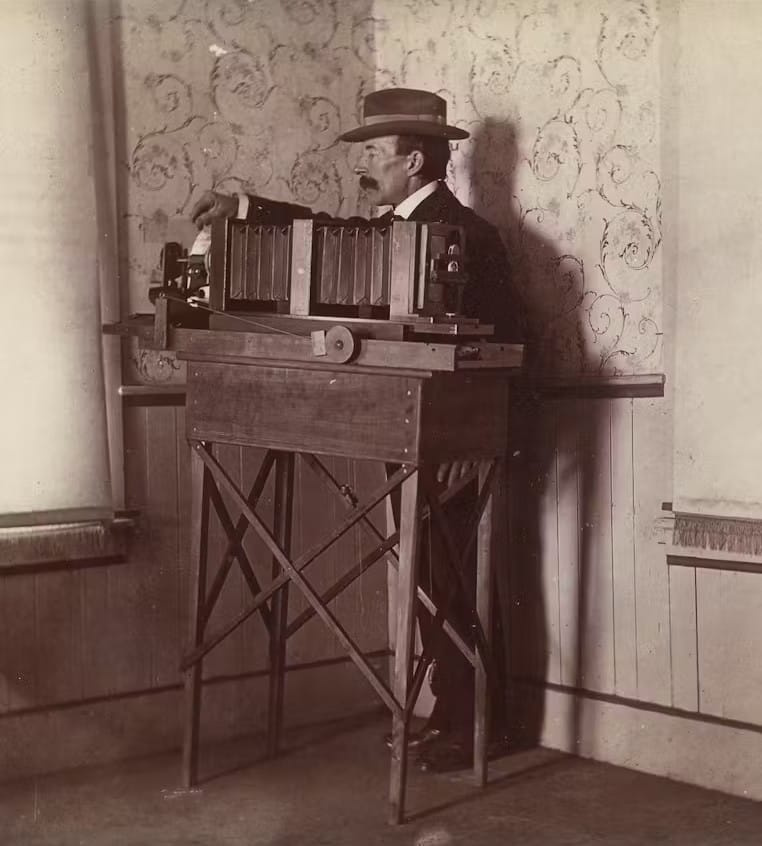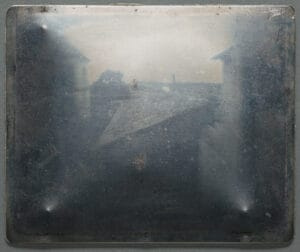Capturing Light Through Time
Have you ever stopped to wonder how we got from cumbersome boxes requiring hours of exposure to the powerful camera in your pocket? The history of photography is a fascinating tale of art, science, and human ingenuity, a journey of capturing light itself to preserve a moment forever. Join me as I trace this remarkable evolution, from its earliest experiments to the digital age.
The Dawn of an Idea: Inventing the Medium
Long before the first photograph was ever taken, the core principle was understood. The camera obscura (Latin for “dark room”) was a known phenomenon for centuries, projecting an inverted image of the outside world onto a wall through a small hole. Artists used it as a drawing aid, but the dream of automatically fixing that image remained elusive.
This dream began to materialise in the 1820s thanks to a French inventor named Nicéphore Niépce. Through a process he called Heliography (sun writing), he managed to create the world’s first permanent photograph in 1826. Using a pewter plate coated with bitumen, which hardened when exposed to light, he captured the view from his window after an incredibly long exposure of eight hours. The age of photography had officially begun.
The Revolution of Technique: Making Photography Practical
Niépce’s partner, Louis Daguerre, later refined the process, creating the Daguerreotype in 1839. These were stunningly detailed, mirror-like images on silver-plated copper, but they were unique, positive copies that could not be reproduced. Meanwhile, across the channel in England, William Henry Fox Talbot had invented the Calotype process. This method produced a paper negative, which could then be used to make multiple positive prints—a fundamental principle that would shape the future of photography.
The subsequent development of the wet collodion process in the 1850s, followed by the invention of flexible roll film by George Eastman’s Kodak company, truly democratised photography. Eastman’s 1888 Kodak camera, pre-loaded with film for 100 exposures and famously advertised with the slogan “You press the button, we do the rest,” put the power of image-making into the hands of the masses.
Establishing Genres: Photography Finds Its Purpose
As the technology became more accessible, photographers began to explore its vast potential. Portraiture, once the exclusive domain of the wealthy who could afford painted likenesses, became available to the middle class. The camera also became a powerful tool for documentation, giving rise to photojournalism and social documentary, capturing historic events and shining a light on unseen lives.
Perhaps one of its most enduring roles has been in capturing the natural world. From early expeditions to modern conservation efforts, photography has been vital in documenting our planet’s breathtaking landscapes and incredible biodiversity. This tradition continues today, with many fine art photographers, like Paul Newson in his Wingèd Beasties series, using their craft to create intimate portraits of nature that transform delicate subjects like dragonflies into stunning, luminous artworks for the home.
Photography as Art: The Battle for Recognition
For much of its early life, photography struggled to be recognised as a true art form, criticised by some as a mere mechanical process. In response, movements like Pictorialism emerged in the late 19th century. Pictorialists sought to manipulate the photographic image to make it resemble more traditional art forms like paintings and etchings, using soft focus and special printing techniques to emphasise beauty and emotion.
This was countered in the 1920s by New Objectivity (Neue Sachlichkeit), a German movement that celebrated the camera’s unique ability to render the world with sharp precision, finding beauty in straightforward, unmanipulated detail.
The Digital Age and Beyond
The late 20th and early 21st centuries have been defined by the most seismic shift since its invention: the move from analogue to digital photography. The first digital cameras arrived in the 1970s, but it was the integration of high-quality sensors into mobile phones that truly changed everything. Suddenly, everyone had a camera in their pocket, leading to an exponential explosion in the number of images taken and shared.
This has transformed not only how we take pictures but also how we edit, share, and experience them. From social media to computational photography, the digital age has made image-making a universal language. Yet, despite these technological advances, the core goal remains the same as it was for Niépce: to capture a sliver of time, a play of light, and a fragment of our world, preserving it for generations to come.








One Comment
What do you think is the most significant shift in the evolution of photography and why? Is it the invention of the first camera, the transition to digital, or the integration of cameras into our daily lives through smartphones?